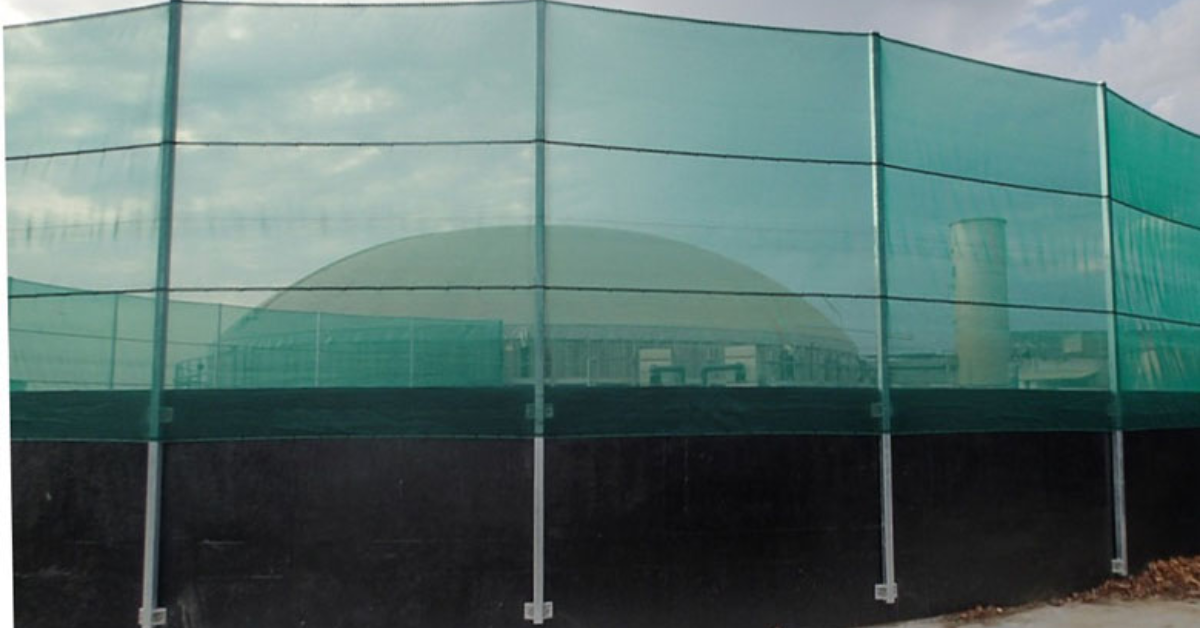Effective Solutions for Cleaner, Safer Worksites: The Importance of Dust Control Netting
In today’s fast-paced construction and industrial environments, managing environmental impacts and maintaining safe, clean working conditions have become more critical than ever. One of the most significant challenges on such sites is the control of airborne dust particles. This is where Dust Control Netting comes into play—a specialized solution designed to minimize dust dispersion, promote better air quality, and ensure regulatory compliance. By acting as a protective barrier, this netting offers both practical and environmental benefits, particularly for urban and high-traffic construction zones.
Understanding the Problem: Dust Pollution on Worksites
Dust is more than just a nuisance—it poses a real threat to health, safety, and the surrounding environment. Construction, demolition, mining, and landscaping activities often generate large amounts of particulate matter. These particles can be carried by the wind, affecting workers, nearby residents, and ecosystems. Prolonged exposure to dust can lead to respiratory issues, allergic reactions, and long-term health conditions.
Furthermore, uncontrolled dust can reduce visibility, posing a danger to workers and machinery operators. For companies operating within populated areas or near sensitive environments, mitigating this risk is not only a responsibility but also a requirement under many environmental regulations.
What Is Dust Control Netting?
Dust Control Netting is a durable, weather-resistant mesh material designed to capture and limit the movement of dust particles in open-air environments. It is typically installed around construction sites, scaffolding, or temporary fencing to contain airborne particles generated during work operations. The netting acts as a physical barrier, slowing down wind speeds and trapping dust before it can spread beyond the site boundary.
Manufactured from high-density polyethylene (HDPE) or similar materials, dust control nets are designed to withstand UV rays, rain, and strong winds, making them a long-lasting solution for outdoor use. Available in various sizes and mesh densities, this netting can be customized to fit the needs of different industries and project scales.
Key Benefits of Using Dust Control Netting
-
Health and Safety Improvements
By minimizing dust dispersion, the netting helps create a safer environment for workers and nearby residents. Reducing airborne particles directly contributes to better respiratory health and decreased risk of illness. -
Environmental Protection
Dust control solutions play a crucial role in protecting local ecosystems. Excessive dust can damage plant life, pollute water sources, and negatively affect wildlife habitats. Containment with netting helps reduce these adverse impacts. -
Regulatory Compliance
Many municipalities and government agencies require dust control measures on active worksites. Failing to implement adequate dust management can result in penalties, work stoppages, and reputational damage. Dust Control Netting is an effective way to meet these legal obligations. -
Improved Public Perception
Clean, contained construction sites tend to leave a more favorable impression on the public. Netting adds a layer of professionalism and responsibility that reflects well on contractors and developers. -
Cost Efficiency
While there is an initial investment in purchasing and installing netting, the long-term savings from avoided fines, health issues, and environmental damage are significant. Maintenance costs are low, and the material can often be reused across multiple projects.
Applications Across Industries
Dust Control Netting is widely used in multiple sectors, each with unique dust management needs:
-
Construction Sites: The most common use, where the netting surrounds the perimeter of a job site or is attached to scaffolding to control dust from cutting, grinding, and movement of heavy machinery.
-
Demolition Projects: Debris and dust are rampant during demolition. Installing netting helps contain particles that would otherwise travel across neighborhoods.
-
Mining Operations: In open-pit and quarry environments, controlling dust is essential for worker safety and environmental protection. Netting acts as a barrier along haul roads and extraction zones.
-
Agriculture and Landscaping: Dust generated during plowing, harvesting, or large-scale landscaping can be controlled with netting, reducing harm to nearby crops and communities.
-
Industrial Warehousing: Storage of fine powders and materials can lead to airborne dust, especially when loading or unloading. Netting helps control internal and external dispersion.
Choosing the Right Dust Control Netting
Selecting the appropriate type of netting depends on several factors:
-
Mesh Size: Smaller mesh sizes trap more dust but may restrict airflow more than larger ones.
-
Material Strength: For high-wind areas or long-term projects, heavier-duty materials are ideal.
-
UV Resistance: UV-stabilized netting ensures durability under constant sun exposure.
-
Custom Sizing: Some providers offer custom-cut netting to suit irregularly shaped installations or varying site dimensions.
When shopping for Dust Control Netting, it’s important to work with reputable suppliers who provide quality assurance, installation support, and detailed product specifications.
Installation and Maintenance Tips
Proper installation is key to the effectiveness of dust control solutions. Netting should be tensioned tightly to prevent flapping in the wind and securely fastened at regular intervals using cable ties, clips, or fasteners. For large-scale projects, anchoring systems such as poles or fencing may be required for support.
Maintenance involves periodic inspections to check for rips, sagging, or dislodged sections. Most netting materials are easy to clean and can be reused if stored properly between uses.
Future Trends in Dust Control
As global awareness of environmental and health issues continues to grow, demand for effective dust mitigation solutions is rising. Innovations in materials—such as biodegradable netting and smart monitoring systems—are emerging to enhance performance and sustainability. Additionally, regulatory bodies are expected to tighten controls on dust emissions, making products like Dust Control Netting even more vital for compliant operations.
Final Thoughts
Dust may seem like a minor issue compared to the larger scope of industrial and construction projects, but its consequences are far-reaching. From health hazards to environmental degradation and legal liabilities, uncontrolled dust can derail progress and cause serious harm. Fortunately, simple yet effective tools like Dust Control Netting offer a practical way to address these challenges head-on.
With its proven ability to limit airborne particles, protect the environment, and maintain safe, professional worksites, dust control netting has become an essential component of modern project management. Whether you’re operating in urban centers or remote areas, investing in this solution ensures cleaner air, healthier communities, and a smoother path to project success.







